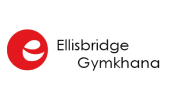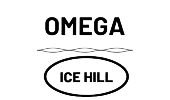In modern architecture, exterior cladding plays a crucial role in both aesthetics and functionality. Whether for commercial buildings, residential structures, or industrial spaces, exterior cladding enhances visual appeal, provides protection, and improves energy efficiency. Choosing the right façade solutions is essential to ensure durability, weather resistance, and long-term performance.
What is Exterior Cladding?
Exterior cladding refers to the outermost layer of a building's envelope, designed to protect the structure while adding an aesthetic touch. Modern façade solutions are engineered to withstand environmental conditions while offering design flexibility and insulation benefits.
Types of Exterior Cladding Materials:
- Compact Laminate Panels: Known for their strength, water resistance, and contemporary finish.
- Metal Cladding: Offers durability and a sleek, industrial appearance.
- Wood Cladding: Provides a warm, natural aesthetic with excellent insulation properties.
- Glass Cladding: Enhances modern buildings with a sophisticated, high-end look.
- Fiber Cement Panels: A durable, weather-resistant option with versatile design capabilities.
Choosing the Right Exterior Cladding for Your Building
Selecting the right façade solutions depends on several factors, including climate conditions, budget, maintenance requirements, and architectural vision. Working with an experienced cladding provider ensures the best results in terms of aesthetics, durability, and performance.
The Compact Laminate Panel is like an Universal material that meets with all environmental, style, design and durability demand, to be the first choice of the modern architecture.
Benefits of Compact Laminate (HPL) Exterior Cladding
1. Enhanced Aesthetic Appeal
One of the primary functions of exterior cladding is to elevate the buildingÔÇÖs visual appeal. Cladding materials come in a variety of textures, colors, and finishes, enabling architects and designers to create striking modern architecture with unique and innovative designs.
2. Weather Resistance and Durability
High-quality weather-resistant panels protect buildings from harsh climatic conditions such as rain, wind, and UV radiation. Properly installed exterior cladding prevents moisture infiltration, reducing the risk of structural damage and extending the lifespan of the building.
3. Energy Efficiency and Insulation
Advanced façade solutions contribute to improved energy efficiency by providing thermal insulation. Cladding helps maintain indoor temperatures, reducing heating and cooling costs. This makes it an eco-friendly choice for sustainable building designs.
4. Low Maintenance and Longevity
Modern cladding materials require minimal maintenance, making them a cost-effective solution. Unlike traditional paint or plastered walls, cladding resists fading, cracking, and deterioration over time.
5. Sustainability and Eco-Friendliness
With growing environmental concerns, many modern architecture projects incorporate sustainable exterior cladding materials. Options like recycled composite panels, fibre cement boards, and engineered wood promote green building practices while maintaining high performance.

















































